Greek fourrees
Ancient coins were counterfeited almost as soon as they were invented. I have seen an excellent fourree of the early silver half-stater of the Kroisos "bull and lion" type (Sear Greek 3420) from c. 560-540 BC. Here are striking examples of well-known Greek types.
For a larger selection, see the off-site page on Greek fourrees by Aaron Emigh.
Persian Kings (Xerxes-Darius III, in Lydia, c. 486-330 BC)

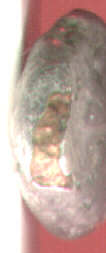

Imitation, with edge 7:00-9:00, obverse to right. Its prototype.
Imitation siglos. 15-14 mm. (4 mm thick) 4.50 grams. (Originals weigh c. 5.35 grams) This original: 16-14 mm. 5.40 grams.
Great king kneeling (running?) right, holding spear diagonally downwards in right and bow in left. No legend
/oblong punch
Breaks in the plating are clearly visible at 3:00 and around the edge 7:00-9:00.
Prototype: Sear Greek 4678. This basic type was issued over a long period of time so it is not possible to date the prototype closely, much less the imitation. However, the issue ended with Alexander the Great, so it must be prior to about 330 BC.
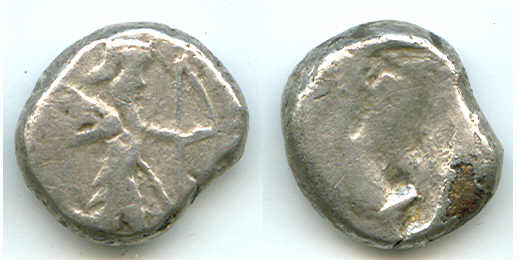
Fourree, 15-13 mm. 4.22 grams.
Break in silver at 4-5:00 on the reverse, only.
Type as above.
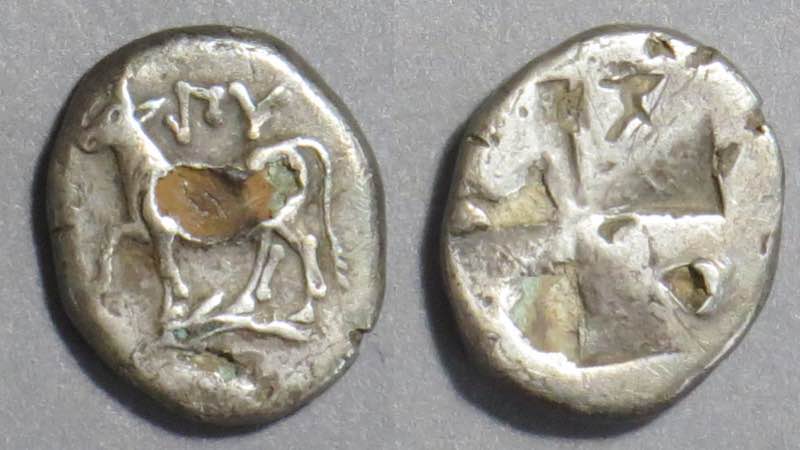 Thrace, Byzantion.
Thrace, Byzantion.
18-15 mm. 3.82 grams. (Should be c. 5.3 grams)
c. 416-357 BC.
Cow standing left on dolphin, ΠY above
Mill-sail pattern incuse
Sear Greek Coins 1579.
SNG Copenhagen II 475

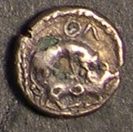 City of Byblos. Second half of 4th century BC.
City of Byblos. Second half of 4th century BC.
Fouree, only 9 mm! 2:30. 0.58 grams (an obol)
Galley left with two hoplites with round shields, hippocamp below.
The reverse is the usual lion attacking bull type, but reversed left to right.
Silver must have been very valuable to make a profit by plating such a tiny piece!
This one is in exceptional condition, even for the prototype.
Thourioi (= Thurium), Lucania, Italy.
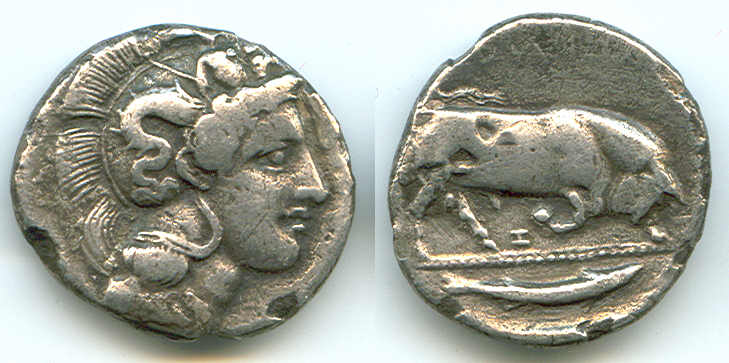
Fourree, 21 mm. 7:30. 6.14 grams. Plating mostly intact, broken only at the edges. Excellent style.
Of Thourioi (= Thurium), Lucania, Italy.
Head of Athena right, helmet decorated with Scylla.
Bull butting right, fish in exergue. Above bull, weak ethnic.
Sear Greek 442 (400 - 350 BC). SNG Copenhagen 1435-1445 (typically c. 7.6 grams, range 6.45-7.98 grams).
Alexander the Great (336-323 BC, posthumous prototype type c. 320-290 BC)

Tetradrachm. 28 mm. 3:00. 14.05 grams. (Originals weigh c. 17 grams.)
Deeply pierced into the earhole.
Head of young Heracles right, in lion-skin headdress
/Zeus seated left, holding eagle and sceptre. The legend "of Alexander" in Greek "ALEXANDROU" is crudely attempted.
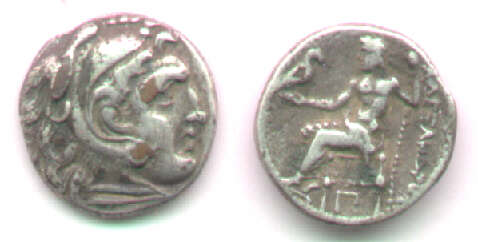
Alexander the Great, posthumous.
16 mm. 12:00. 3.53 grams.
Drachm. Copper breaks through the high spots, including the eagle on the reverse.
Prototype: Sear Greek 6730 variety.
Antiochus III, Seleucid King 223-187 BC


Tetradrachm. 30 mm. 10:00.
An amazing broken coin. Looking at the reverse, you can see the silver foil of the obverse behind the left hand of Apollo, which corresponds to the hair over the ear on the obverse. I am amazed that the foil there has not bent and broken off. The copper core has corroded away to make a cave well inside the silver foil.
Diademed head of Antoichus I right (no legend)
/ Apollo seated left on omphalos and holding a bow, monograms in outer field left and right.
BASILEOS ANTIOXOU downwards
Athens "New Style" tetradrachm.
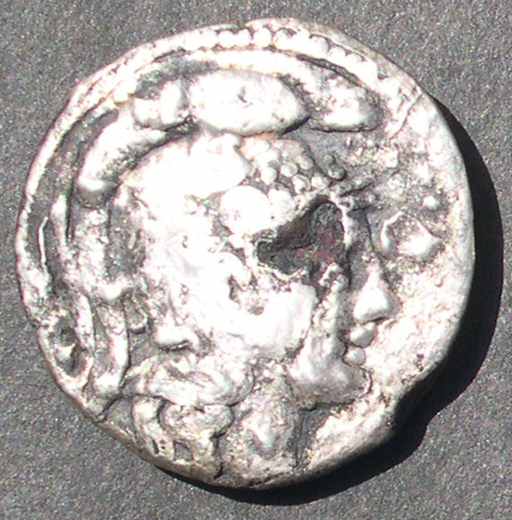
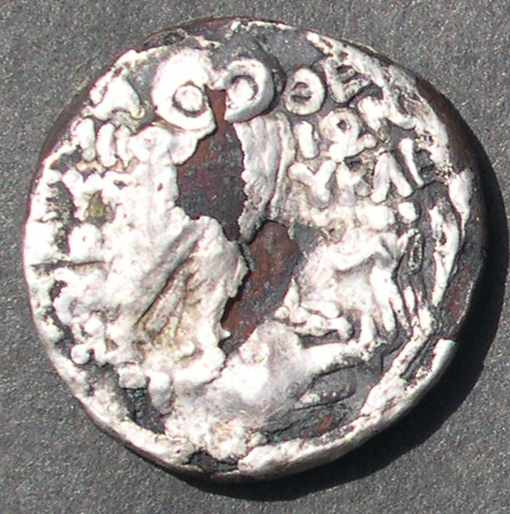
Athens "new style" tetradrachm. 29-28 mm. 12:00. 14.86 grams.
Head of Athena in crested helment right
Owl right, head facing, on horizontal amphora. The two Dioscuri standing at the lower right. (This symbol should date the coin, but I do not know the date within the very wide range of dates during which the new style tetradrachms were minted in the second and first centuries BC.)
Sear Greek 2559 variant. SNG Copenhagen III Attica 268.
Shekel of Tyre, prototype 60/59 BC
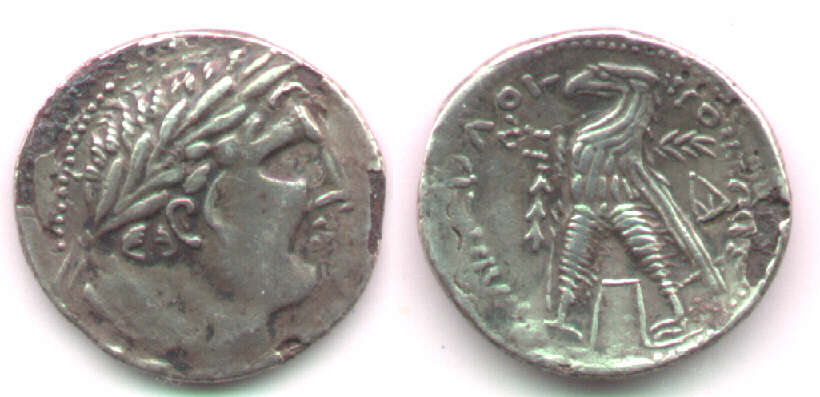
29-28 mm (full-size). 11:30. 12.50 grams (originals weigh about 14-14.5 grams).
A coin of wonderful style. Look at that laurel wreath!
The copper core is visible on the obverse at the edge from 9:00-11:30 and at 3:00. It is visible on the reverse at 3:00-4:00.
Laureate head of Melqarth right
/eagle standing left on beak of a ship, cornucopiae under right wing, in field left, a club and symbols, in right field a monogram.
The prototype legend begins at 1:00 and says: TYPOY IERAS KAI ASULOU
This attempt at reproducing the legend is crude.
Cherronesos, Thrace. Hemidrachm, c.400-350 BC.


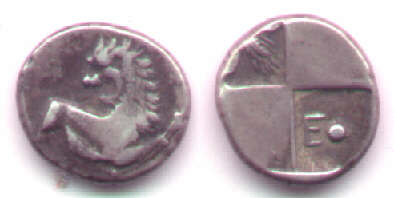
Plated, holed, imitation. enlargment Its prototype.
Superb style, but an obvious fourree, with copper showing all the way through the hole, around it, and elsewhere.
I think the piercing was to mark it as a counterfeit.
Obverse: Forepart of lion right, looking back, paws raised.
Imitation reverse: /reverse in four quadrants, one with grape cluster, opposite one with pellet (It could be rotated 90 degrees counterclockwise)
Prototype reverse: The reverse comes in many varieties. This one has E and a pellet in the lower right. Wheat ear in opposite quadrant.
Reference; Sear Greek I, 1602-1606 var. SAN XVII#1, cover coin type. SNG Copenhagen 824-843 var. Says "480-350 BC." Prototype, AR14, 9:00. 2.51 grams. Imitation: 13mm, 1.71 grams.
Dyrrhachii, Illyricum, c.200-30 BC.
 17mm. 7:00. 2.38 grams.
17mm. 7:00. 2.38 grams.
Excellent fourree, with only a few breaks in the silver.
Cow right, suckling calf, above MENISKOS
/double stellate pattern within double linear square, DOP above, KOY on left. Off center.
Prototype: Sear Greek 1900 var (different magistrate). SNG Copenhagen III 459/485ff.
This is a very common type and it is not surprising to find a counterfeit of it.
Parion, Mysia, 350-300 BC.
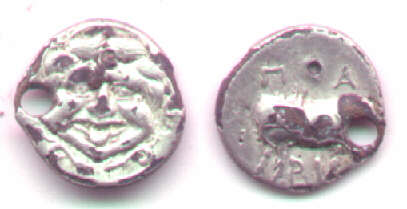

Fourree hemidrachm with much silver, but much copper showing, and its prototype.
13 mm. 12:00. 1.65 grams. A big hole. AR14. 6:00. 2.02 grams.
Gorgonion facing, tongue out
/bull standing left, looking back. Pi A above, P I below.
Again we see piercing, which may indicate that this was discovered to be false in ancient times and purposely defaced.
Prototype: Sear Greek 3919-3922. SNG Copenhagen 257-266. Dated to about 350-300 BC.
Parion is on the southern shores of the Propontis.
Return to the main page on Roman imitations.
Go to the main Table of Contents page for this whole site.




 Thrace, Byzantion.
Thrace, Byzantion.














